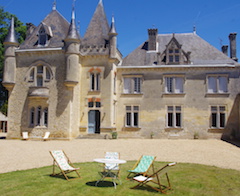
An exceptional location, at the gates of Saint Emilion, for this magnificent 18 hectare vineyard, surrounding the historical residence of the Reiffers family, established since 1643. In April 2013, Sophie Fourcade sold Côte de Baleau to the family Cuvelier (also owner of Château Léoville Poyferré, Poujeaux, Grandes Murailles and Clos Fourtet).
Over the generations, this family, today represented by Sophie Fourcade-Reiffers, has been able to give value to this beautiful terroir, mainly composed of clay and limestone.
The wine, with its excellent structure, typical of the terroir and characterised by the expression of the fruit and the subtlety of the tannins, places Côte de Baleau today, as a classic Saint Emilion totally representative of his appellation.
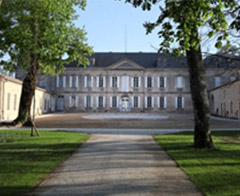
Acquired in 2006 by the insurance company AG2R La Mondiale,which already owned the adjacent estates of Château Larmande (Grand Cru Classé) and Château Grand Faurie La Rose (Grand Cru), Château Soutard Overlooked by the bell tower of Saint-Émilion church, Château Soutard rejoices in its glorious past while at the same time asserting a true spirit of modernity. Its wines reflect this, possessing a unique style that echoes the formidable potential of the limestone plateau. Situated on a unique limestone plateau where all the Saint-Émilion grands crus are grown.
Soutard is a 35 hectares estate of which 30 hectares are under vine. Château Soutard uses traditional, reasoned methods according to the nature of the plot, the soil, the grape variety, the rootstock, the age of the vine, etc.
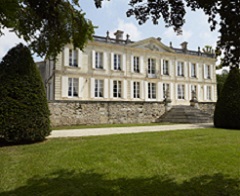
One of the biggest properties in the region of Libourne, the Château’s origins goes back to the XVIIIth century and more precisely to 1750, the date of the end of construction of the château.
During these 350 years of history, the property has grown successively to reach today the surface of 53 ha of vineyards.
Since 2012, Château de La Dauphine follows an Organic farming approach of Biodynamie for a greater respect for the Nature and man. Their strategy: produce great biodynamie wines expressing the finesse of their terroir.
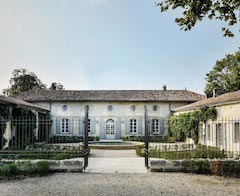
Château Beauregard with its exceptional vineyards, is one of the first properties of the region which started growing wine in the XVIIIth century.
The Château Beauregard is located near Saint Emilion, in the prestigious region of Pomerol. The vineyard of 17,5 ha practice organic farming and is situated on the “plateau de Catusseau”, a localization that created world-famous wines such as Cheval Blanc or Pétrus.
In 2014, the families Moulin and Cathiard acquired Château Beauregard and launched an in-depth transformation. Since 2016, the Château Beauregard opens its doors to Wine lovers and permits them to discover its production secrets.
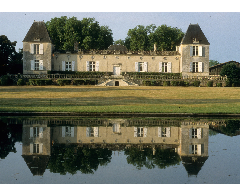
This house is from the 16th beginnings 17th century. This type of house will be named in 18th century "Chartreuse" (house with main floor and in d front a square). Chateau de Sales is in the same family till 1464, so 549 years of familiar succession. It is pass by weddings: Bertrand de Sauvanelle, aux Desyagues, de Laage de Meux et actually de Lambert. The vineyards sizes a 90 hectares
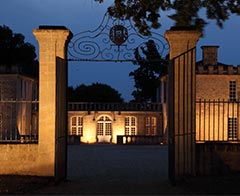
Located in the Saint-Hippolyte commune, the Château was built during the reign of Louis XIV. It was purchased by Baron Bich in 1978 and it is now the property of his children. The wines of Château de Ferrand express fully the richness, the generosity and the complexity of its terroir. The requirement for quality, as well as the respect of the wine lovers are the basis of the Château de Ferrand philosophy, which offers mature (minimum of 5 years) Bordeaux wines suitable for further aging under the Saint-Emilion Grand Cru appellation.
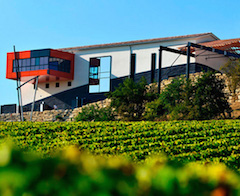
Château Croizille is a Saint Emilion Grand Cru of 5 ha of vineyards who benefits of a remarkable terroir and of an excellent exposure on the south hillsides of Saint Emilion.
The Château Croizille was acquired by the family De Schepper - De Mour in 1996.
They link the great terroir to a high technology and a traditional know-how in order to produce a wine with a unique personality of Saint Emilion. The construction of the new modern cellar ended in October 2012 and is a great technical tool but also a touristic one.
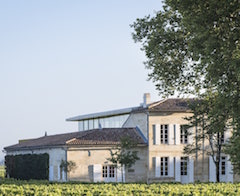
Wine estate since the XVIth century, the Château La Dominique is a Grand Cru Classé of Saint-Emilion ideally situated in the northwest of the region.
Acquired in 1969 by Clément Fayat, the vineyard was completely reconstructed and was since then the object of constants improvements.
In the direct neighbourhood of Château Cheval Blanc, Figeac, L’Evangile and La Conseillante, the exceptional terroir of this property of 29 ha consists of sand and clay, where Merlot, Cabernet Franc and Cabernet Sauvignon develop their full potential.
To refine the precision and the quality of a recognized château, an architectural and technical set, totally innovative, was inaugurated in 2014.
This new space hosts the wine making and reception spaces with a panoramic terrace and an exceptional point of view over the vineyard of Pomerol and Saint Emilion.
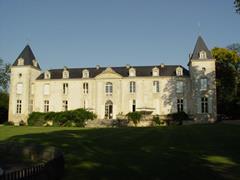
The beautiful Château de Reignac surrounded by its 80 hectares of vines was built at the 16th century by the Lord Baude de Peyron. Situated in the region Entre-deux-mers, its soil enjoys/benefits from the best particularities of the left and the right bank. Over the centuries, the Château undergoes several improvements such as the court of honor and the greenhouse constructed by Gustave Eiffel in the 18th and 19th centuries. Then, the dovecote has been renovated in 1998 and is used, now, as a tasting place.
In 1990, the property has been bought by Yves and Stéphanie Vatelot who called on Michel Rolland, the well-known wine expert. When they purchased the Château, there was only one wine, Le Château de Reignac. Since then, the new owners created three new cuvées: Grand Vin de Reignac (which is their premium wine), Reignac Blanc (a mix of all the best kind of grapes in the region) and Bathus (a special cuvee composed exclusively with Merlot).
In 1996 and 2000, the property's wine has been graded with 90 and 92/100 by the famous critic, Robert Parker.
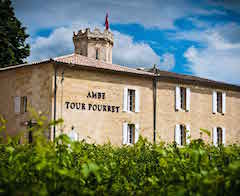
The Château Ambe Tour Pourret is situated on the original road which connected Saint-Émilion with Coutras, a road crossed by Louis XI at the end of the Hundred Years' War. The first signs of the existence of the Château date back to 1811.
The property Ambe Tour Pourret is constituted of 5 ha of vineyards today: The Château, a barrel cellar and a vat house. The vineyard grapes varieties are Merlot and Cabernet Franc on a sandy soil and a clayey basement. The Château Ambe Tour Pourret chose to practice organic farming for a greater respect for the terroir and for the environment. The vineyard of the Château Ambe Tour Pourret is certified as biological since 2015.
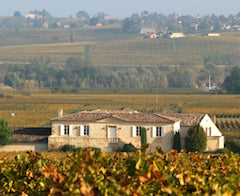
The Château Larmande is one of the oldest properties of Saint-Émilion. The city records date back its existence to 1585.
Today, the property extends itself over 20 ha, by making the Château one of the most important Grand Crus Classés of Saint-Émilion.
Combining ancestral methods of culture and high technologies, Larmande knew how to find the right alchemy to bring every vintage to its highest level. The property is located 1 200 meters away from the Saint-Émilion village.
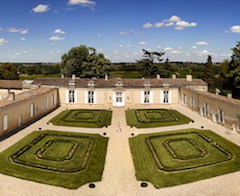
The origins of the vineyard of Château Fombrauge goes back to the XVIth century, what makes them one of the oldest vineyards of Saint-Emilion. Its beautiful chartreuse was originally a chartreux convent. The Château has one of the widest vineyards of all the Grand Crus Classé of Saint Emilion.
With a vineyard which extends itself over 58,60 ha, it is exactly this outstanding surface which gives to its terroir a unique typicality… A typicality in the diversity. Diversity of the soil, but also multiplicity of exposure which provides the wines of Fombrauge its complexity and its identity.
The history of Fombrauge is linked to 3 families, the Canolle, the Dumas, and the Taffard. Today, to express all the wealth of this vineyard, Bernard Magrez, owner since 1999, links at Fombrauge an ancestral know-how to a high level of precision in wine growing.
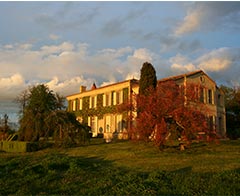
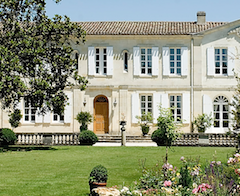
The Château Canon-La-Gaffelière, property of the family “von Neipperg” since 1971, is situated on the side leg in the south of the medieval village of Saint-Émilion.
The property of 19,5 ha is certified Organic farming since the vintage 2014 and produces wine with a big qualitative constancy. The grape planting is characterized by a balance between Merlot and Cabernet.
After eight centuries of family wine-making tradition, the earl Stephan von Neipperg managed to raise Château Canon-La-Gaffelière to the rank of First Grand Cru Classé of Saint-Émilion, thanks to his efforts, passion and a modern approach of wine growing.
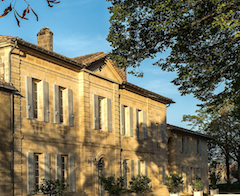
Property of the family Cuvelier since 2001, Clos Fourtet knew how to confirm its place within the First Grand Crus Classés thanks to the investment of a passionate family.
Situated at the top of the calcareous tray which constitutes the privileged terroir of the great wines of Saint-Émilion, Clos Fourtet is at the same time one of the best placed vineyards and one of the most renowned. Its vineyard of 19ha all in one piece, extends itself near the medieval city over impressive underground quarries.
The traditional wine making process controlled by the latest techniques, completes what the nature gave to this Grand Cru to produce wines with a great delicacy and a mineral freshness. The vineyard is in progressive transformation into biodynamie.
The Cuvelier family is also an owner of the château Poujeaux, les Grandes Murailles et Côte de Baleau.
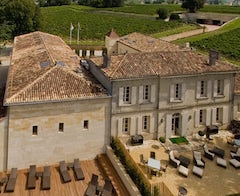
The vineyards of 7ha of the Château Franc-Mayne, Saint Emilion Grand crus, are situated in the northwest of Saint-Émilion.
Since 2005, the château is the property of Griet Van Malderen-Laviale and her husband Hervé Laviale, already owners of the Château de Lussac in Lussac.
The acquisition was followed by important work with the creation of a new vat house and the construction of 5 quality guest rooms.
The vineyards (Merlot for 90 % and Cabernet Franc for the rest) are situated on a typical argilo-calcareous ground of Saint-Émilion.
The barrel cellar is particularly impressive and is partially situated in the basement, benefiting from a very vast network of underground galleries, that were the result of the past exploitation to extract the " stone of Bordeaux ".
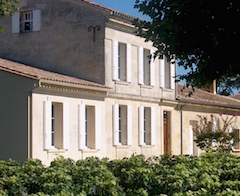
The Château Laniote is a Grand Crus Classé of 5ha in the northwest of Saint-Emilion.
The property belongs to the family Arnaud de la Filolie since almost two centuries. The property was established by Pierre Lacoste, wine merchant in Saint-Emilion in 1816, who bought at first a wine cellar with some vineyards all around which he enlarges little by little until 1844.
The property was transmitted then directly from mother to daughter during eight generations. The name of the owner thus changed at every succession: Lacoste, Rouja, Freymond, Schneider, La Filolie.
In the heart of the city of Saint-Emilion, always belong to the descendants of the family: the chapel of the XIIIth century which we can see on the label, the Hermitage where lived the Saint: Emilion, as well as a part of the Catacombs. Those remains are registered as Historic monuments.
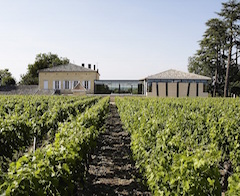
The Château Villemaurine, Saint-Emilion Grand Cru Classé of 12ha, situated close to the village of Saint-Emilion, lives a real revival.
As we restore art carefully and with respect, the Onclin family undertook important works, to reveal the excellence and the typicality of the terroir and open the domain to the visitors: new wine cellar, new vat house, restoration of the underground quarries of the Château.
The vineyard which is situated on the Saint Émilion's argilo-calcareous tray, planted in 80 % of Merlot and 20 % of Cabernet Franc.
Justin Onclin's philosophy associates respect for the terroir and research of excellence.
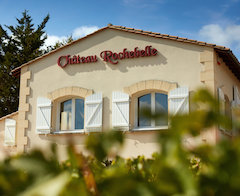
The Château Rochebelle is located in the middle of the tray of Saint-Émilion and well-known châteaux. It is the property of the family Faniest since the middle of the 19th century. Its name refers to the beautiful rocks which we extracted from the quarries in the 18th century.
Today, Philippe Faniest and his daughter Emilie, continue the work of their previous generations with a priority that could be seen as a philosophy: respect of the wine and its environment.
This small property of 3 ha is situated next to the Château Pavie, in front of the city of Saint-Émilion. Small train, monoliths cellars, light effects: the concept of wine-tourism is well established here. Thanks to the regular quality of its wines, the château was promoted in 2012 to the row of Grand Crus classes.

Situated in the municipality of Saint-Laurent-des-Combe, the Château de Candale is a Saint-Émilion Grand cru classé.
Since 2010, the château is the property of Jean-Louis Vicard who hired the team of Stéphane Derenoncourt to write a new page of the legend of this château. In 2017 the Château de Candale, Grand Cru of 13ha, as well as the “Atelier de Candale”, a “bistronomical” restaurant, were acquired by the family Decoster.
The numerous micro-plots of the vineyard offer a great diversity of terroir and exposure, participating to the elegance and the complexity of their wines.
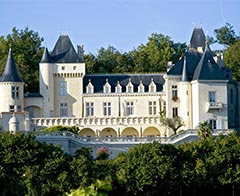
In the spring of 769, Charlemagne was finishing his conquest of Aquitaine, he established a fortified camp at the confluence of the Isle and Dordogne rivers. The young Emperor was the first person to build a fortress on this site, it was built on the remains of a Gallo-Roman burial mound. As of the 12th century - and for the following 5 centuries - De L'Isle family were lords and masters of La Rivière. Gaston de L'Isle, Mayor of Bordeaux, built the present château in 1553, and the main part was completed in 1577. There were a great many different owners, during the XIX and XX century. James Gregory is now the new owner, he seeks to perpetuate the tradition of excellence of the wines made on the lands of La Rivière.

The story of Château Fleur Cardinale is one of an ascent due to the passion of men and the undeniable quality of a terroir.
In May 2001, Dominique DECOSTER and his wife Florence decided to buy Château Fleur Cardinale. Charmed by the quality of life and the welcome given by the entire profession, they felt that to succeed in their new life project, it was preferable to live on the property.
With the help of the team in place, the estate became a Grand Cru Classé in 2006. It currently covers 23.5 hectares and is converting to organic farming.
"Our job enables us to meet people from all countries and all cultures. For us, who love contact with our visitors, these moments of sharing are an extraordinary opportunity.
Until now, we have always received guests in our house, in a friendly manner, but with a limited capacity of guests.
Since this year, our new cellar offers a more adapted capacity, but our spirit remains the same: to open the doors of a very personal universe to you.
In a hushed atmosphere, we offer an experience in an intimate setting, open to nature, with a strong emphasis on poetry.
A unique private tour, where all the senses of our visitors will be awakened."
Translated with www.DeepL.com/Translator (free version)
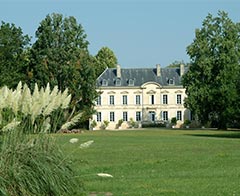
The château Siaurac dates back from the 18th and the 19th centuries. Being the biggest property on the A.O.C. (Appellation of Controlled Origin) Lalande de Pomerol, with its 46 ha (115 acres) of vineyards, its wines are awarded by gold medals and European wine critics. The property has belonged to the same family since 1832, who owns also two other famous estates on the right river bank of Bordeaux: chateau le Prieuré, a Great Classified Growth from Saint-Emilion and the Chateau Vray Croix de Gay in Pomerol. The 19th century park of 15 ha (37, 5 acres) is very rare in this region where vines are queens. Left at a wild stage in opposition to the carefully tended vineyard, this parc hold magnificent trees of a few hundred years old. You will be welcomed by Madam the Baronness Guichard, who will be delighted to let you discover her property as well as her house and her wines, of course!
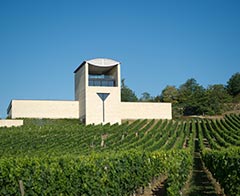
In 1823, the Esquissaud family acquired the estates of Châteaux Faugères and Péby Faugères. 1987: The land was inherited by Pierre-Bernard Guisez. Up to then, all the wine produced had been sold to a single local merchant. P. Guisez and his wife Corinne wanted to become more involved in the vineyards, setting out on a quest for the finest quality. Their wish was to see these exquisite terroirs become jewels in the crown of the Saint-Emilion Grand Cru appellation, a desire that was to be fulfilled in a short time with the help of Michel Rolland. Silvio Denz is passionate about art and in particular René Lalique's creations. When he acquired Château Faugères in march 2005, he decided to rely on the exceptional clay and limestone soil to take the Château Faugères wines to the heights, continuing the quest for quality and allowing the great Faugères terroirs to express themselves to the full.


